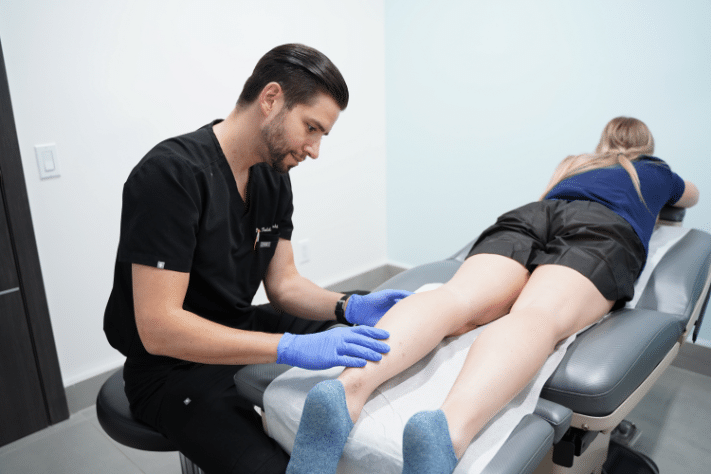How Does Insurance Coverage for Varicose Veins Vary Among Different Providers?
In the realm of vascular health, varicose veins stand as a common concern for many individuals. As the question lingers—Are varicose veins covered by insurance?—it unveils a nuanced landscape of coverage variations among different providers. In this exploration, we delve into the intricacies of insurance coverage for varicose veins, shedding light on key considerations and the optimal time to consult a vascular doctor.
Decoding Insurance Coverage for Varicose Veins
Understanding Varicose Veins:
Varicose veins, often characterized by twisted, swollen veins visible just beneath the surface of the skin, are a common vascular issue. While these veins are often a cosmetic concern, they can lead to discomfort, pain, and, in some cases, more severe complications.

Are Varicose Veins Covered by Insurance?
The coverage for varicose vein treatment varies among insurance providers. Many insurance plans classify vein treatments as either medically necessary or cosmetic. If the veins cause symptoms such as pain, swelling, or ulcers, treatments are often considered medically necessary and may be covered. However, if the primary concern is cosmetic, coverage may be limited.
Commonly Covered Varicose Vein Treatments:
- Compression Stockings: Insurance providers often cover the cost of compression stockings, which are frequently recommended as an initial treatment to alleviate symptoms associated with varicose veins.
- Endovenous Laser Ablation (EVLA) and Radiofrequency Ablation (RFA): These minimally invasive procedures, designed to close off faulty veins, may be covered if deemed medically necessary by the insurance provider.
- Sclerotherapy: In cases where sclerotherapy is used to treat varicose veins, insurance coverage may be provided if the procedure is considered medically necessary.
- Vein Stripping and Ligation: Traditional surgical interventions like vein stripping and ligation may also be covered if prescribed as a medical necessity.
Factors Influencing Coverage:
- Severity of Symptoms: Insurance companies often assess the severity of symptoms associated with varicose veins when determining coverage. Symptoms like pain, swelling, and skin changes may enhance the likelihood of approval.
- Failed Conservative Treatments: Many insurance providers require evidence that conservative treatments, such as lifestyle changes and compression therapy, have failed before approving more invasive procedures.
- Diagnostic Testing: Documentation of diagnostic tests, such as ultrasound, supporting the medical necessity of the proposed treatment, can significantly impact coverage decisions.
When to See a Vascular Doctor?
Persistent Pain and Discomfort:
If varicose veins are causing persistent pain, aching, or discomfort, it's crucial to consult a vascular doctor. These symptoms may indicate an underlying vascular issue that requires professional evaluation.

Swelling and Skin Changes:
Swelling, skin discoloration, or the development of ulcers around varicose veins are red flags that should prompt a visit to a vascular specialist. These symptoms may signify more advanced venous insufficiency that requires medical attention.
Difficulty in Daily Activities:
If varicose veins interfere with daily activities or impact the quality of life, seeking the expertise of a vascular doctor is essential. Addressing the issue promptly can prevent further complications.
Failed Conservative Measures:
When conservative measures, such as lifestyle changes and compression therapy, fail to alleviate symptoms or improve the condition, it's time to consult a vascular specialist. They can assess the situation and recommend appropriate treatments.
Cosmetic Concerns with Medical Implications:
Even if the primary concern is cosmetic, a consultation with a vascular doctor is advised. They can evaluate whether there are underlying medical issues contributing to the cosmetic concerns and recommend suitable interventions.
Navigating the Consultation Process
Choosing the Right Vascular Doctor:
Selecting the right vascular doctor is a crucial step in the journey to address varicose veins. Look for specialists with experience in venous disorders, board certification, and positive patient reviews. A consultation will involve a thorough examination, discussion of symptoms, and, if necessary, diagnostic tests.
Documentation for Insurance Approval:
To enhance the likelihood of insurance approval, be prepared to provide documentation supporting the medical necessity of the proposed treatment. This may include records of diagnostic tests, failed conservative treatments, and a detailed account of symptoms.
Discussing Coverage with the Insurance Provider:
Before undergoing any procedure, it's advisable to contact the insurance provider to discuss coverage details. Clarify what treatments are included in the plan, the criteria for medical necessity, and any out-of-pocket costs.
Conclusion: Empowering Choices in Vascular Health
In the intricate interplay between varicose veins and insurance coverage, understanding the nuances is key to making informed decisions about treatment. Whether seeking relief from symptoms or addressing cosmetic concerns with medical implications, the journey often begins with a consultation with a vascular doctor. By navigating the landscape of coverage variations among different providers and understanding when to seek professional guidance, individuals can empower themselves to make choices that prioritize their vascular health and overall well-being. Varicose veins need not be a source of uncertainty; with the right information and guidance, the path to healthier veins becomes clearer.
Comments
Post a Comment